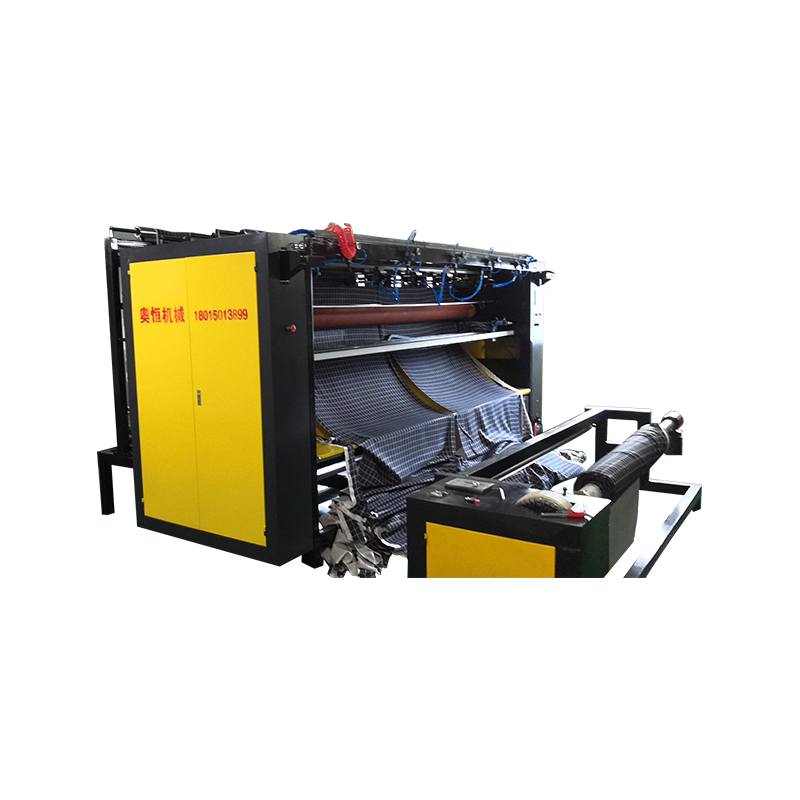Request A Quote

Modern CNC (Computer Numerical Control) textile cutting machines have evolved significantly in recent years to meet the growing demands of precision, efficiency, and high-speed production in the textile and apparel industries. These machines incorporate a variety of advanced automation features that streamline operations, reduce human error, and optimize material usage. Understanding the available automation capabilities helps manufacturers select the most suitable equipment for their specific production needs, whether for fashion apparel, upholstery, automotive textiles, technical fabrics, or composite materials.
One of the most important automation features in contemporary CNC textile cutting machines is automated material spreading and feeding. These systems can automatically unroll fabric from rolls, align it with the cutting table, and control tension to prevent distortion. In multi-layer cutting applications, automated spreaders ensure consistent stacking of fabric layers with uniform alignment and controlled pressure. Some systems also include sensors to detect fabric edges and correct skewing in real time, improving cut accuracy and minimizing waste.
Another key automation function is intelligent nesting software, which digitally arranges pattern pieces on the fabric to maximize material utilization. The nesting algorithm evaluates thousands of potential configurations within seconds, placing parts in a way that minimizes offcuts and fabric waste. This function is fully integrated into the CNC cutting system and often considers fabric characteristics such as grain direction, stretch zones, and print patterns. Automated nesting not only reduces material costs but also accelerates production planning by generating efficient cutting layouts in minutes.
Vision and scanning systems have become increasingly common, allowing the CNC cutter to detect printed markers, fabric flaws, or alignment points. High-resolution cameras scan the surface of the fabric and feed the image to the control software, which adjusts cutting paths to compensate for shifts in fabric placement or distortions. This is especially important for printed textiles where precise alignment of pattern pieces with design elements is required. Vision systems can also be used to verify part identification, enabling automated quality control.
Tool-changing automation is another advanced capability found in high-end CNC textile cutting machines. Depending on the material and cutting requirements, different tools such as rotary blades, oscillating knives, notching tools, perforators, or pens may be required. Some machines are equipped with multi-tool heads that can switch between tools automatically based on the programmed job file. This allows uninterrupted processing of complex patterns involving a variety of cuts, markings, and edge treatments.

Vacuum-based material hold-down systems are widely used in automated cutters to stabilize fabric during cutting. The vacuum table creates uniform suction to hold the fabric layers in place, preventing slippage that could cause inaccuracies. In more advanced systems, zoned vacuum control allows suction to be applied only where necessary, conserving energy and improving performance when cutting partial table lengths or irregularly shaped materials.
Another feature increasingly found in modern systems is automated labeling or part identification. Integrated labeling heads or inkjet printers can mark cut parts with barcodes, job numbers, or assembly instructions. This is particularly beneficial in production environments where numerous small components need to be tracked and matched downstream. It eliminates the need for manual tagging, reducing labor and the chance of human error.
Software-driven cut file management and remote monitoring also form a key component of automation. Operators can load cut files via a network connection or cloud-based platform, track job progress in real-time, and receive notifications or diagnostics remotely. These systems integrate with production planning software, enabling just-in-time manufacturing, batch traceability, and data analytics for operational optimization.
In high-volume production, automated offloading and sorting systems can be included. Once cutting is complete, parts can be automatically conveyed to sorting stations, bundled, or placed into bins for the next stage. In some advanced setups, robotic arms assist in picking up and sorting the cut pieces, further reducing labor costs and streamlining workflows.
Maintenance automation is also emerging as an important aspect. Some machines now include predictive maintenance features, such as sensors that monitor blade sharpness, cutting force, or motor load. The system can alert operators when blades need replacing or when maintenance intervals are due, helping to prevent unplanned downtime and extend machine lifespan.
Modern CNC textile cutting machines incorporate a wide range of automation features, including automated material feeding, intelligent nesting, vision systems, tool-changing, vacuum hold-down, labeling, remote job management, robotic sorting, and predictive maintenance. These advancements significantly enhance productivity, consistency, and flexibility in textile manufacturing, enabling faster turnaround times, reduced labor dependency, and more efficient use of raw materials. As digitalization continues to transform the textile industry, the integration of AI, machine learning, and IoT into CNC cutting systems is expected to further expand the scope and intelligence of automation in fabric processing.
Copyright © ChangZhou AoHeng Machinery Co., Ltd. All Rights Reserved

 English
English 中文简体
中文简体 русский
русский Español
Español